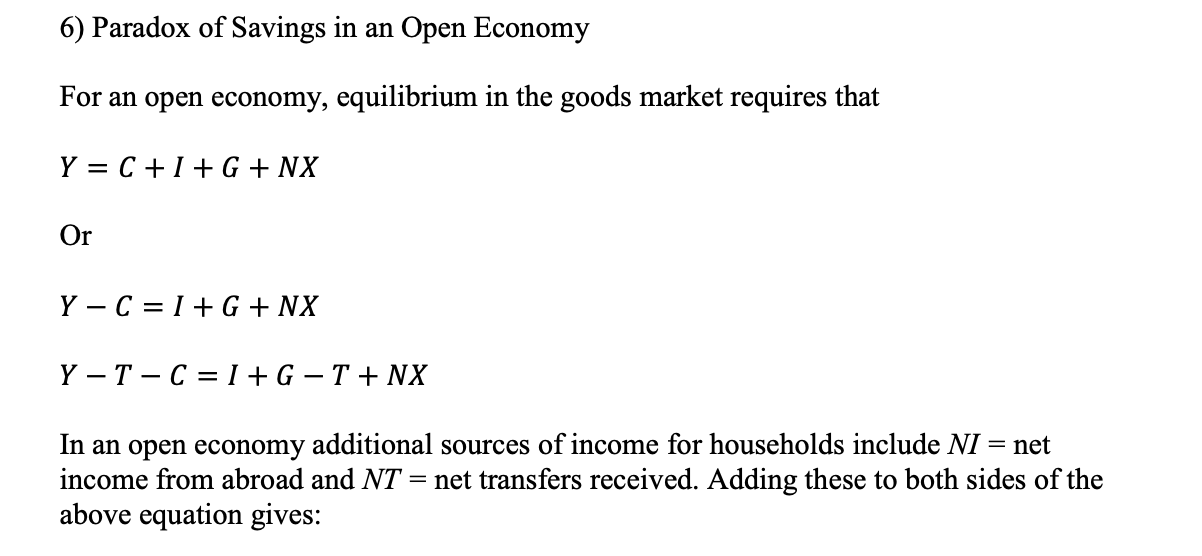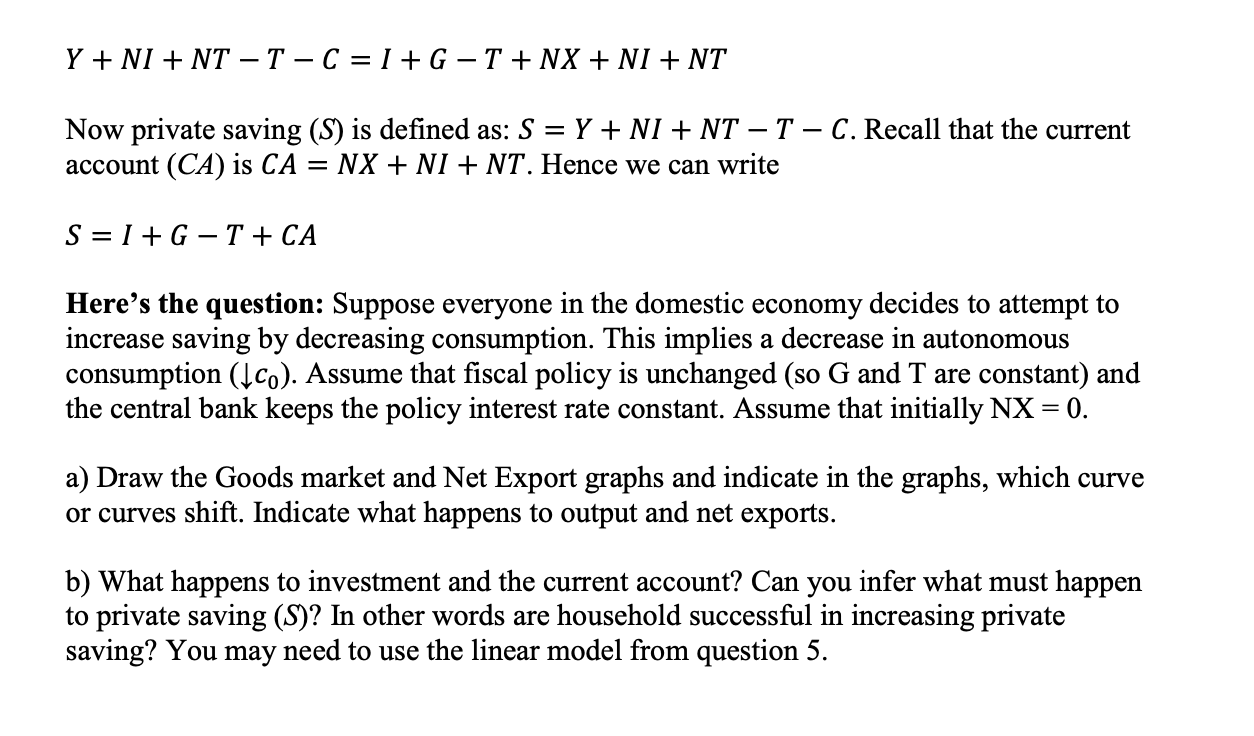

6) Paradox of Savings in an Open Economy For an open economy, equilibrium in the goods market requires that Y=C+I+G+NX Or YC=I+G+NXYTC=I+GT+NX In an open economy additional sources of income for households include NI= net income from abroad and NT= net transfers received. Adding these to both sides of the above equation gives: Y+NI+NTTC=I+GT+NX+NI+NT Now private saving (S) is defined as: S=Y+NI+NTTC. Recall that the current account (CA) is CA=NX+NI+NT. Hence we can write S=I+GT+CA Here's the question: Suppose everyone in the domestic economy decides to attempt to increase saving by decreasing consumption. This implies a decrease in autonomous consumption (c0). Assume that fiscal policy is unchanged (so G and T are constant) and the central bank keeps the policy interest rate constant. Assume that initially NX =0. a) Draw the Goods market and Net Export graphs and indicate in the graphs, which curve or curves shift. Indicate what happens to output and net exports. b) What happens to investment and the current account? Can you infer what must happen to private saving (S) ? In other words are household successful in increasing private saving? You may need to use the linear model from question 5. 6) Paradox of Savings in an Open Economy For an open economy, equilibrium in the goods market requires that Y=C+I+G+NX Or YC=I+G+NXYTC=I+GT+NX In an open economy additional sources of income for households include NI= net income from abroad and NT= net transfers received. Adding these to both sides of the above equation gives: Y+NI+NTTC=I+GT+NX+NI+NT Now private saving (S) is defined as: S=Y+NI+NTTC. Recall that the current account (CA) is CA=NX+NI+NT. Hence we can write S=I+GT+CA Here's the question: Suppose everyone in the domestic economy decides to attempt to increase saving by decreasing consumption. This implies a decrease in autonomous consumption (c0). Assume that fiscal policy is unchanged (so G and T are constant) and the central bank keeps the policy interest rate constant. Assume that initially NX =0. a) Draw the Goods market and Net Export graphs and indicate in the graphs, which curve or curves shift. Indicate what happens to output and net exports. b) What happens to investment and the current account? Can you infer what must happen to private saving (S) ? In other words are household successful in increasing private saving? You may need to use the linear model from question 5








